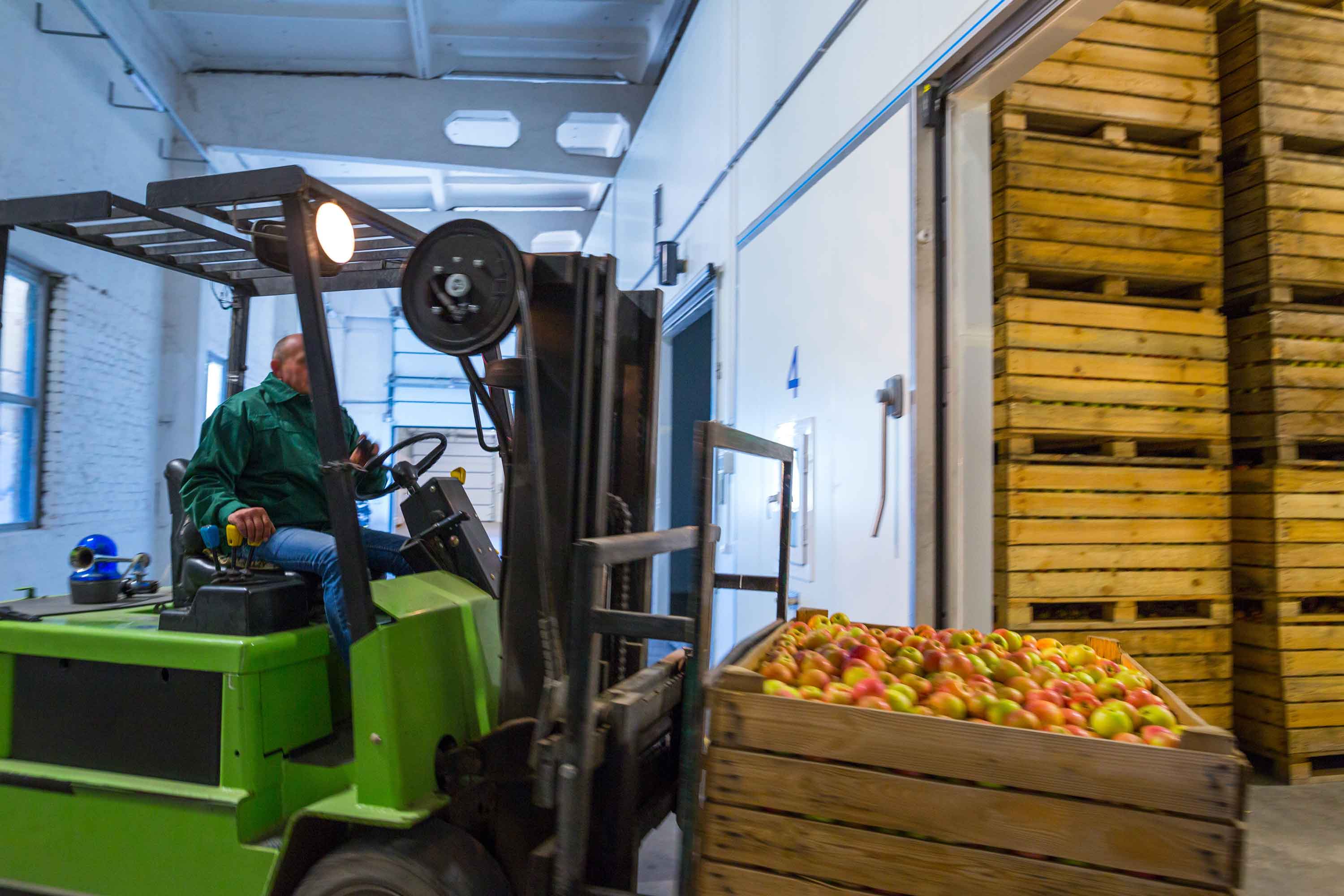How old is an apple by the time someone buys it at the grocery store?
The question should not be about the “age” of the apple, or the time since it was picked, but rather it should be about how fresh the apple is. Growers and researchers have focused on the challenge of maintaining the freshness of apples for longer periods of time for many years. The apple industry’s goal is to provide fresh tasting apples to consumers throughout the year.
Apple harvest typically begins in July-August for the earliest maturing varieties. In most cases, the earliest picked apples are not stored under refrigeration for very long but go directly to grocery stores for sale to consumers. The apple harvest in the U.S. is usually concluded by early to mid-December depending upon how the weather affects the harvesting process. Storing apples is expensive, so growers, packers and marketers try to move the newly picked apples to store shelves as quickly as possible. Short-term refrigeration is used to maintain freshness, but apples typically move out of that storage quickly to get to market.
According to data gathered by USApple, roughly 40 percent of each year’s apple crop is marketed by December 1 of the harvest year – most of which goes from harvest to store shelf without being placed in storage. The remaining 60 percent of the crop is moved to the market over the next 8 months.
Types of Apple Storage
Two types of storage are 1) conventional refrigeration, where apples are kept at 34 to 38 degrees Fahrenheit while awaiting shipment and 2) controlled atmosphere (CA). Controlled-atmosphere storage is a sophisticated technology that controls not only the temperature at which the apples are stored, but the atmosphere as well. CA storage techniques for apples were pioneered in the U.S. at Cornell University in the 1930s. In CA storage, apples are sealed in an environment that is around 2 percent oxygen where temperature, humidity, nitrogen and carbon dioxide are all carefully regulated. CA storage slows the apples’ “breathing”, which consequently slows their ripening. CA storage makes the storage room perfect for the apples to stay virtually “tree fresh” through their “nap.”
Because of the cost of storage and the fact that the new crop harvest begins in July, it would be extremely rare to find an apple for retail sale that had been harvested a year earlier, but the use of CA storage has been proven to keep apples fresh for long periods of time.
Talking Points
- The apple industry’s goal is to provide fresh tasting apples to consumers throughout the year.
- Storing apples is expensive, so growers, packers and marketers try to move the newly picked apples to store shelves as quickly as possible.
- Typically, the earliest picked apples (July-August) are not stored under refrigeration for very long but go directly to grocery stores for sale to consumers.
- Controlled-atmosphere (CA) storage, a sophisticated technology in use since the 1930s, controls not only the temperature at which later apples are stored, but also the atmosphere.
- CA storage slows the apples’ “breathing”, which consequently slows their ripening. CA storage makes the storage room perfect for the apples to stay virtually “tree fresh” through their “nap.”
- Approximately 40 percent of each year’s apple crop is marketed by December 1 of the harvest year – most of which goes from harvest to store shelf without being placed in storage; the remaining 60 percent of the crop is moved to the market over the next 8 months.








